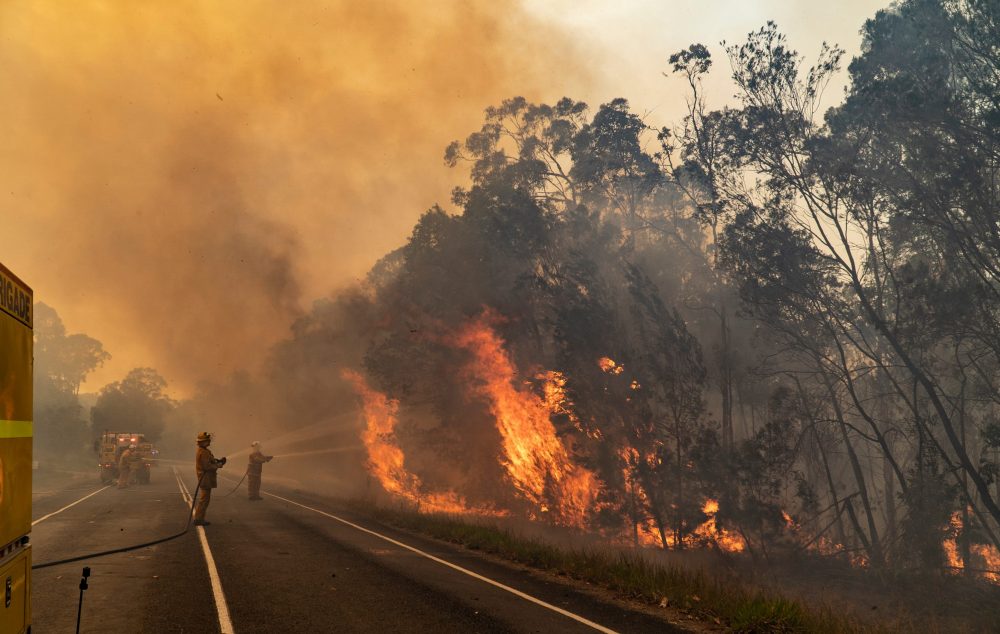BMP Insights: Trick Components and Perks of a Bushfire Management Plan
Wiki Article
Vital Tips for Bushfire Monitoring to Make Sure Fire Defense

Comprehending Bushfire Threat Degrees
Recognizing the differing degrees of bushfire threat is vital for reliable planning and preparation in mitigating possible risks to residential or commercial properties and lives. Bushfire threat degrees are usually categorized based on factors such as climate conditions, gas availability, topography, and historical fire actions. By comprehending these threat neighborhoods, levels and people can proactively implement methods to lower vulnerability and enhance resilience despite potential bushfire occasions.The first degree of bushfire risk is reduced risk, where the possibility of a bushfire occurring and creating significant injury is marginal. Risky levels represent a considerable danger, with conditions conducive to fast fire spread and severe fire behavior.
Recognizing these bushfire risk degrees makes it possible for stakeholders to customize their readiness and reaction activities appropriately, guaranteeing a aggressive and reliable approach to bushfire monitoring.
Developing a Defensible Space
Reliable bushfire administration starts with establishing a defensible space around buildings to improve defense versus potential fire dangers. A defensible area is a barrier area that produces an obstacle between a framework and the surrounding combustible plant life. This room serves as a crucial line of protection, providing firemens a safe area to run and aiding to minimize the danger of a fire spreading out to the property.When developing a defensible room, it is vital to consider the layout of the home and the bordering landscape. Clearing greenery, particularly highly flammable plants, within a particular distance of the residential or commercial property can aid stop the fast spread of fires. Furthermore, preserving a well-irrigated zone around the home can additionally improve its defensibility.
Normal maintenance of the defensible space is crucial to ensure its performance. This includes cutting looming branches, clearing dead plants, and maintaining the location devoid of debris. By spending time and initiative right into developing and keeping a defensible room, residential or commercial property proprietors can dramatically enhance their opportunities of shielding their homes and possessions during a bushfire.
Executing Fire-Resistant Landscaping
When developing landscapes to reduce the danger of bushfires, including fire-resistant elements is essential for boosting home defense and decreasing fire hazards. Carrying out fireproof landscaping entails strategic preparation to create a defensible room around frameworks. Beginning by selecting fireproof plant varieties that are much less likely to spark and create lower levels of combustible products. Select plants with high moisture content, reduced oil material, and marginal dead vegetation to decrease the threat of fire spread. Additionally, maintain ample spacing between plants and keep them correctly trimmed to stop fire from easily leaping between vegetation.
Developing an Emergency Situation Emptying Plan
Creating a comprehensive emergency situation emptying plan is vital for ensuring the security and health of people during potential bushfire events (BMP). A reliable evacuation plan need to detail clear procedures to follow in the event of a bushfire threat, consisting of designated emptying routes, assembly points, and interaction proceduresTo begin creating an emergency emptying strategy, it is vital to examine the particular risks and vulnerabilities of your area. Identify multiple emptying paths that result in risk-free areas away from the fire, thinking about variables such as surface, road ease of access, and prospective risks. Establish interaction channels to alert citizens of an impending emptying, using techniques such as alarms, text signals, or door-to-door notifications.
Regularly review and practice the emptying check my blog strategy with all homeowners or community members to ensure every person comprehends their obligations and roles. Conduct drills to test the efficiency of the plan and make any essential changes. By having a well-prepared evacuation strategy in position, you can enhance the opportunities of a secure and organized emptying throughout a bushfire emergency situation.
Keeping Fire Safety And Security Devices
After developing an extensive emergency evacuation plan for bushfire events, it is critical to prioritize the routine maintenance of fire safety equipment to guarantee ideal performance and readiness. Regular maintenance of fire security tools such as fire extinguishers, smoke alarm, emergency alarm, and lawn sprinkler systems is essential in securing lives and residential property during a bushfire. When needed., performing routine inspections, screening, and maintenance of these devices by qualified specialists is necessary to assure they are in functioning order.Fire extinguishers should be inspected frequently for pressure degrees, visible damage, and correct capability. By faithfully maintaining fire safety and security tools, people can boost their readiness and response abilities in the occasion of a bushfire.
Conclusion
Finally, reliable bushfire administration involves comprehending danger degrees, developing defensible rooms, implementing fireproof landscaping, establishing discharge strategies, and preserving fire safety and security tools. By adhering to these crucial tips, people can guarantee much better fire click this link security and security for their residential or commercial properties and neighborhoods. It is very important to focus on proactive steps to minimize the dangers linked with bushfires and to be planned for emergency situations.By recognizing the subtleties of bushfire risk degrees, establishing defensible spaces, executing fire-resistant landscape design, producing detailed evacuation strategies, and ensuring the maintenance of fire safety and security equipment, individuals and communities can substantially reinforce their resilience versus the devastations of wildfires - BMP. These ideas are not just vital for securing against immediate fire threats but also for fostering lasting fire protection techniques that can make a considerable distinction in the face of rising bushfire dangers
High-risk degrees indicate a significant threat, with conditions favorable to quick fire spread and severe fire actions. Normal maintenance of fire safety and security equipment such as fire extinguishers, smoke detectors, fire alarm systems, and lawn sprinkler systems is crucial in protecting lives and residential property during a bushfire.In verdict, effective bushfire management includes recognizing threat levels, developing defensible areas, executing fireproof landscape design, creating emptying strategies, and maintaining fire see it here safety and security devices.
Report this wiki page